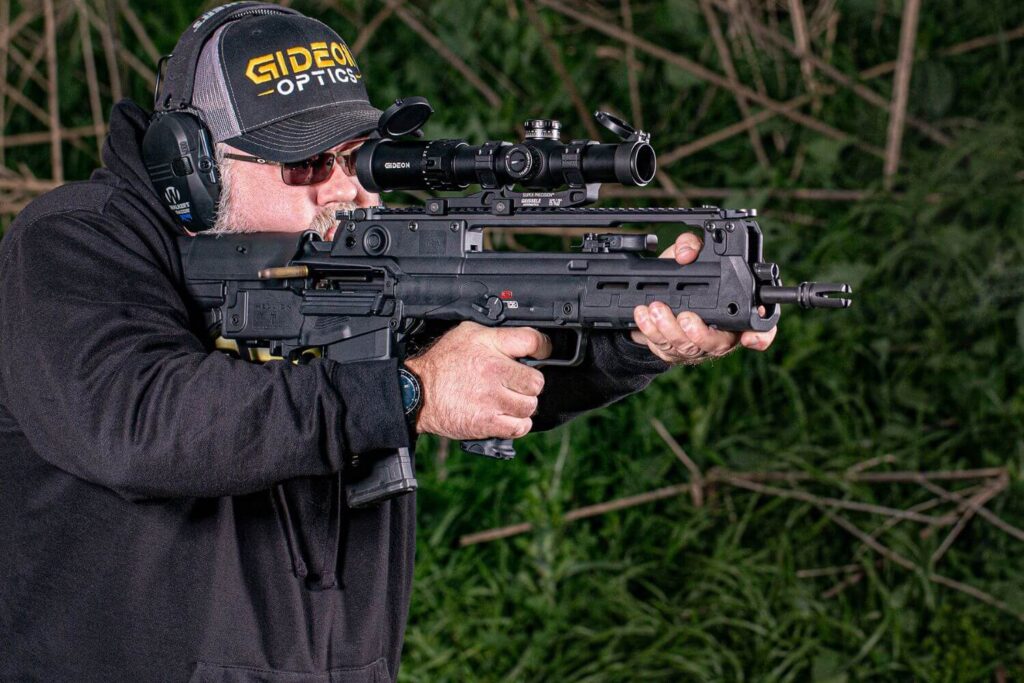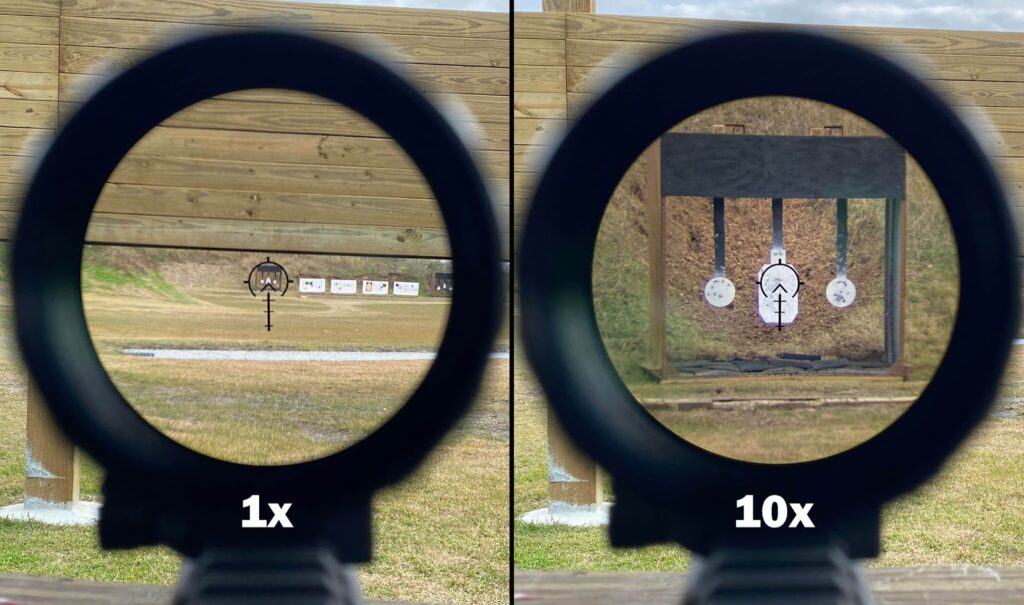0

A low-power variable optic can be the versatile tactical tool you need on your rifle or carbine. Popular upgrades for AR-15 platforms and similar firearms, an LPVO optic bridges the gap between traditional rifle scopes and reflex sights to give you the sight picture you need across short and mid-range target engagements. These scopes offer the flexibility of adjustable magnification and the utility of modern optics technology. Whether you’re building a home defense gun, ranch gun, or your new favorite hunting rifle, a low-power variable optic has a lot to offer.
At first glance, an LPVO optic strongly resembles a traditional rifle scope. It has a characteristic tube shape with a lens at each end and familiar adjustment turrets sitting atop and to the side of the tube. Under the hood, however, there’s a lot more going on. In addition to the optical lenses and small gears used in the creation of additional scopes, the Guardian line of low-powered variable optics has a powerful suite of electronics to support the advancements made in optical manufacturing since your grandpappy’s days.

Tactical rifles and carbines like the AR-15 are popular tools for hunting, sporting, and self-defense because they were designed to be versatile. As the platform’s popularity increased with gun owners, that operational flexibility has only increased as manufacturers offer more and more custom parts, accessories, and upgrades for AR-type firearms. To make the most of this versatility, you need an optic that’s just as adaptable to real-world field conditions.
At its lowest magnification, a low-powered variable optic gives you a true 1x magnification, meaning the image you see viewed through the scope is seen at the same ratio as it is with the naked eye. This magnification power gives your LPVO optic the widest possible field of view and allows for quicker, more robust aiming movements while keeping the target in your sight picture.
In many ways, this offers a similar experience to using a reflex sight on a firearm. Your reticle gives you an accurate, easily visible aiming point for lightning-fast target acquisition. While the image is still passed through multiple optical lenses and your scope offers a larger obstruction than its smaller red dot cousins, it’s still the favored power for tight spaces, rapid response, and many tactical and reaction shooting drills.

At the upper end of your low-powered variable optic’s magnification range, you’ll have an 8-10X zoom, meaning the image appears 8-10 times larger than it would with the naked eye. While that’s still relatively low-powered for a rifle scope, this optic isn’t meant for long-range shooting that approaches your ammunition’s maximum effective range. Rather, it’s for the much more common hunting and protection scenarios seen on farms, ranches, and most woodland hunts, where 300-500 yards are common engagement ranges.
This makes the LPVO optic perfect for a battlesight zero range of 100 yards, at which point many .223/5.56mm rounds will rise through the bullseye at 100 yards before falling back through it at 300 yards. At maximum magnification, your reticle will allow for precise shot placement to put food on the table, protect your livestock, or keep your family safe.
Your low-powered variable optic may have the reticle etched on either the first or second focal plane. As the image of your target is collected by the objective lens, filtered through a series of lenses that clarify and magnify it, and then projected through the eyepiece to your eye, it passes through several different planes. The first focal plane (FFP) sits before the magnification lens relative to your eye, while the second focal plane (SFP) sits after it. The practical effect is that FFP reticles scale with magnification (the reticle grows or shrinks alongside the target image), while SFP reticles remain the same apparent size regardless of magnification.
Aiming through an SFP low-powered variable optic, the image magnifies behind the reticle while the reticle remains the same. This is often considered best for tactical applications where engagements may cross multiple ranges in rapid succession. The static reticle allows for fast targeting and precise follow-up shots.
Targets viewed through an FFP LPVO optic are magnified at the same rate as the reticle, giving better accuracy at longer distances for hunting. The magnified reticle also lets you fine-tune your aiming point to ensure humane placement.
Scopes are limited by the light their objective lens collects. This not only holds true for target identification but also for shot placement with traditional reticles. In dim or low-light conditions, such as dawn, dusk, indoor lighting, or when the target is in shadows, it can be hard to pick out the reticle against the target or its background. Illuminated low-powered variable optics give you adjustable LED illumination to make the reticle stand out for easier shot placement. At its highest setting, this keeps your reticle visible even against the brightest backlighting, while the lower settings are compatible with night vision equipment, perfect for nighttime hunting or protection.
An LPVO optic is a great choice when you need a flexible optic for your tactical firearm. It has the features to take you from zero range to hundreds of yards in moments. We stand behind our scopes with a lifetime warranty that protects your investment in better shooting. Order your Guardian low-powered variable optic from Gideon Optics today.
🕛 Ends 5/26 at 11:59pm. No code needed. Not valid with other coupons or discounts.